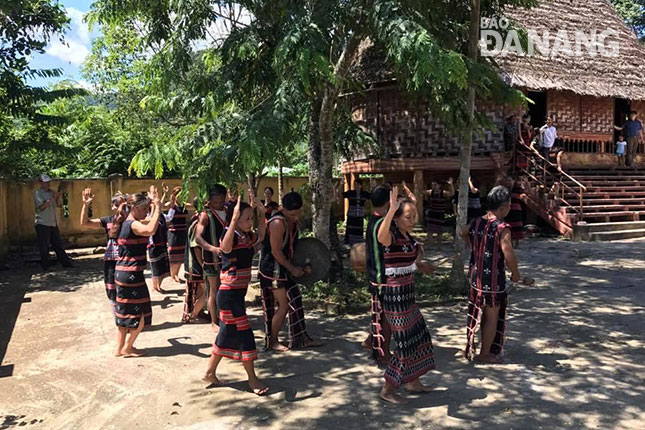Tapping ecotourism potential
In addition to its rich marine resources and special tourism products, Da Nang boasts its diversified ecological environment.
 |
| The ‘tung tung da da’ dance performed by Co Tu people |
According to a spokesperson for the municipal Socio-Economic Development Research Institute, the Ta Lang and Gian Bi villages in Hoa Vang District’s Hoa Bac Commune have great potential for the development of community-based eco-tourism.
In particular, the two villages boast their pristine natural landscape such as wide and shallow streams. In addition, they feature many special characteristics which are imbued with the Co Tu ethnic minority people’s own identity, including cuisine, traditional crafts, Goul houses, gong arts, and the ‘tung tung da da’ dance.
Mr Tran Tra, Head of the city’s Tour Guide Club, remarked that the Ta Lang and Gian Bi villages are ideal places for eco-tourism lovers, and they are also attractive to the most fastidious travellers who want to experience native culture. This is mainly attributed to the villages' distinctive cultural values and their unique geographical advantages.
The Deputy General Director of the city-based Viet Nam Tourism Joint Stock Co (Vitours), Mr Le Tan Thanh Tung, noted “Taking advantage of smooth traffic routes and beautiful scenery along entrance roads, Ta Lang and Gian Bi villages will become even more attractive to community-based eco-tourism lovers.”
Mr Hoang Van Long from the Institute highlighted the importance of developing more support services for this type of tourism such as homestay, walking tours around these villages and stream bathing. In addition, classes to teach how to cook rustic dishes, shoot crossbow and weave fabric should be organised.
He also pointed out some shortcomings during the development of this type of tourism. In particular, there is a serious lack of human resources involved in this service, villagers have no tourism-related skills, and an infrastructure system for the development of eco-tourism has yet to be improved.